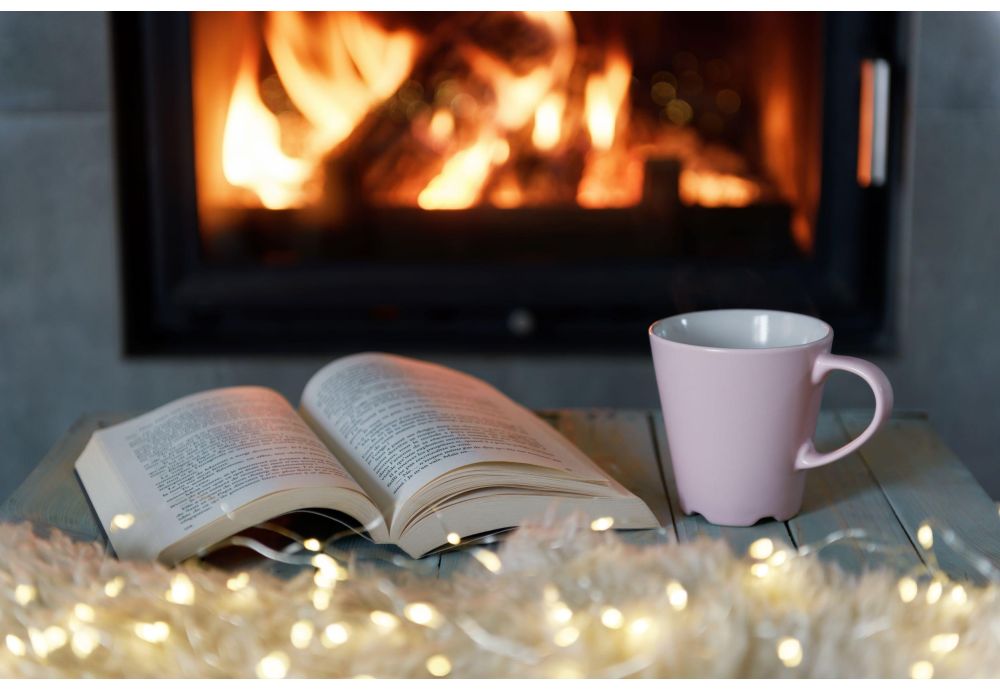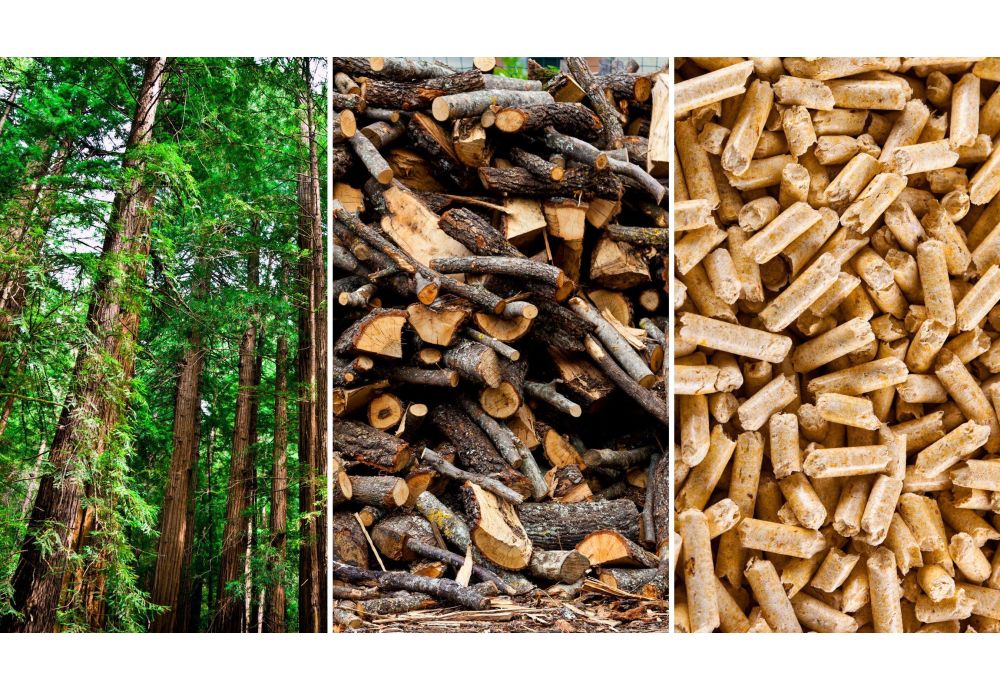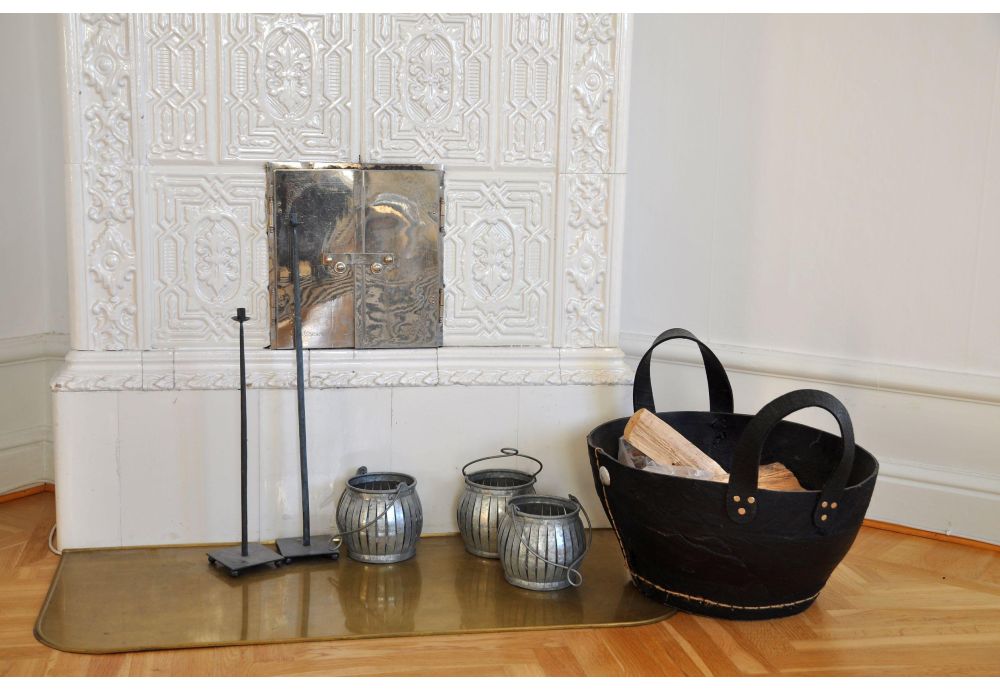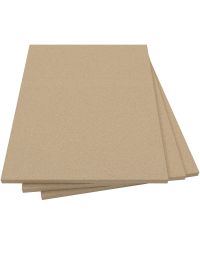When it comes to the choice of construction materials, it is advisable to consider the role which the fireplace plays within a space. The right design and make of the fireplace will guarantee safety to those who use it, give functionality and act as a decorative focal point of the room. Regardless of its role (whether to warm the house or for decorative purposes only), it is crucial to choose a fireplace which is not only aesthetically pleasing but most importantly, guarantees safety to the household's inhabitants.
Fireplace inserts are capable of heating up to 400°C and can even start a fire. For this reason, when the fireplace insert/firebox is installed, we should always use fire resistant materials.
Installing the fireplace- step by step:
Step 1: Creating the hearth
The fireplace insert/cassette/inset stove/firebox should be placed on a hearth (ideally made from concrete or stone) in order to act as a protective barrier between the firebox and the floor. This can double as a storage space for wood logs or fireplace accessories. Next, the fireplace insert should be securely connected to a chimney flue.
Step 2: Creating a false chimney breast
It is important that a safe and solid frame is used upon which a false chimney breast (and insulation) will be built. This step can be skipped if you plan on using fireplace construction board or heat accumulation board. This is because they are characterised by their resistance to high tempertures and depending on the chosen type of board, they accumulate heat or act as insulation. Both fireboards are quick and easy to install.
Step 3: Protecting the back wall and side walls of the fireplace
If you have decided on building a fireplace with the use of a frame, the profiles need to be installed at equal intervals from each other on the back wall and at an appropriate angle.
Ensure that the false chimney breast that is being built will not touching the flue which emits smoke out of the house.
Next we insulate the back wall using our chosen insulation material.
Step 4: The front wall
The next step is to put up the remaining profiles which will create the front wall of the chimney breast. At this point, it is vital to insulate the ceiling since we have already designated the top section of the chimney breast.
Step 5: Chimney breast built using accumulation or insulation board?
During this stage, depending on the utility needs, we finish the side walls in the same way as the back wall, leaving equal intervals between the profiles and applying the highest precision.
For this purpose, you can use fireplace construction board (insulation) or heat accumulation board. You will read more about these types of chimney breast further in this article.
Step 6: Finishing touches on the chimney breast
The last step is to add the decorative touches to the fireplace according to your personal taste. In the latter part of the article, we share ideas about what you can use to decorate the chimney breast.
*However, we recommend to first stick structurally reinforced mesh with high temperature adhesive HB60 and then plaster the area before decorating with stones, tiles etc.
Building a fireplace using fireboards- which type of board to choose?
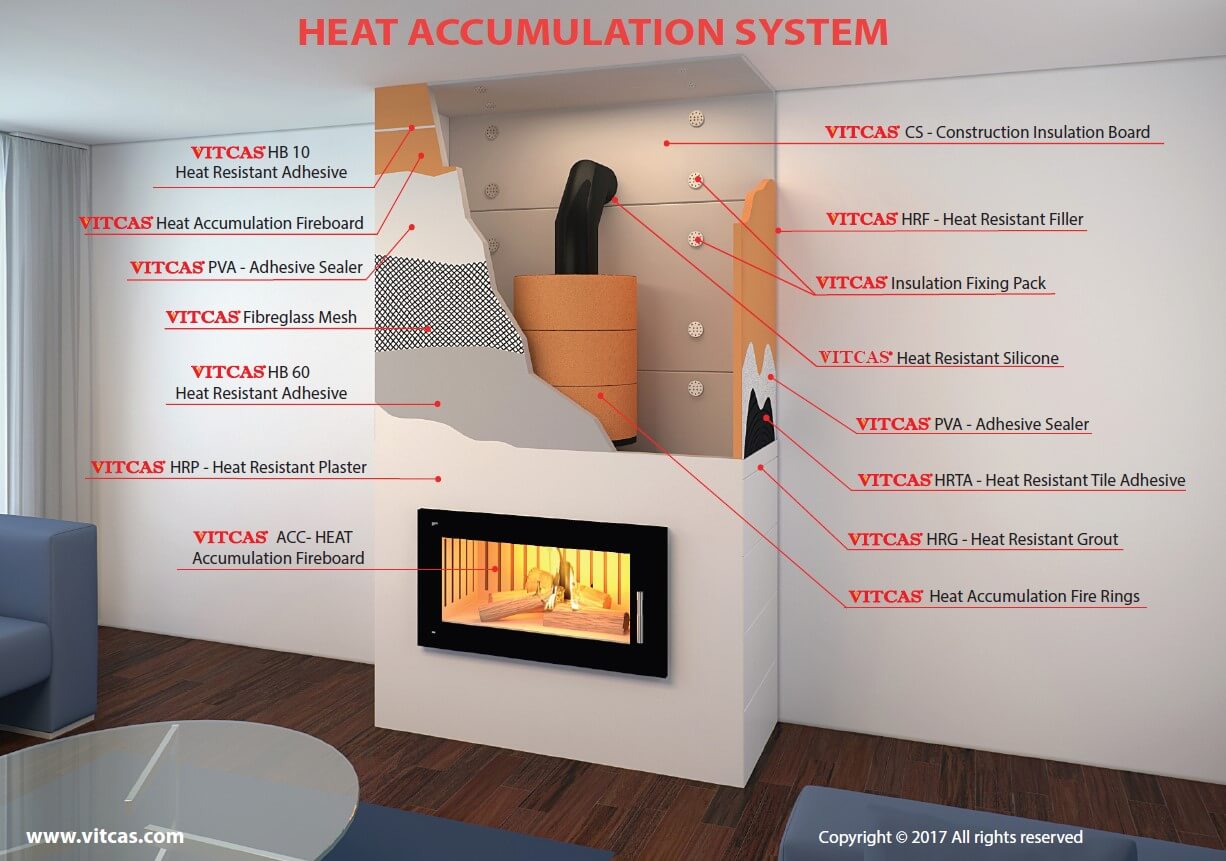
Heat accumulation board
If the fireplace is to act as a heating source, it is recommended to use heat accumulation materials like our Vitcas Heat Accumulation Board or our high alumina Fire Bricks, which retain and radiate heat back into the room long after the fire stops burning.
When creating a chimney breast with heat accumulation boards, you need to stick them together and set them using Vitcas HB10 Rapid Setting Adhesive. Next, prime the area using PVA Adhesive Sealer and then cover it using Fiberglass Reinforced Mesh embedded in HB60 Heat Resistant Adhesive. Finally, plaster the whole area with Heat Resistant Plaster.
If you're using firebricks for the chimney breast, you need to use them in conjunction with Heatproof Mortar which is a ready made cement mix for setting the bricks with high efficiency at a thin joint thickness of 3-5mm. The firebricks should be clean and free of grease because a porous surface facilitates dirt to build up on the bricks.
To increase the heat accumulation effects, use Heat Accumulation Ring(s) to mount on top of stainless steel chimney flues at the top of the fireplace insert/wood burner. Rings help to effectively retain the heat and radiate it back into the room for hours after the fire stopped burning, instead of allowing the heat to escape through the chimney.
Insulating fireplace construction board
It is not always desirable to have a warm chimney breast. In small rooms where the fireplace is not the sole or primary heating source and additional heat is not necessary, the insulated chimney breast may be the safest and most appropriate option, especially if you have small children running around.
Insulation materials are characterised by their low thermal conductivity and hence a chimney breast made using these type of boards/maerials remains the most cool.
Insulation Fireplace Construction Board, which can be used to build a chimney breast without the use of a metal frame and profiles, is distinguished by its high temperature resistance up to 1100°C, good insulating properties and high mechanical stability and strength. Regardless of its strength, it is still easy to cut using simple tools for cutting wood such as a hand saw. In order to join the boards together, it is recommended to use Board Primer on the edges and stick them together using Board Adhesive.
All this needs to be impreganeted and finished off using Vitcas HB60 and Fiberglass Mesh. An additional layer should be plastered using Heat Resistant Plaster to ensure a smooth and even surface of the chimney breast.
What to use as a decorative layer of the chimney breast?
Here we present a few ideas which you can gain inspiration from on decorating the outer layer of your chimney breast in your home.
Fireplace boards
The boards are used in the construction of a chimney breast, act as insulation and following plastering and painting, they require no further finishing touches to look perfectly presentable in any room.
Types of fireboards which can be used:
Insulating boards- resistant to high temperatures even reaching 1100°C, non combustible, possess excellent insulation properties
Fireclay boards- high heat accumulation properties, easy to use and install, resists temperatures up to 1400°C
Vermiculite boards- resistant to high temperatures up to 1100°C and thermal shocks, can be used in direct contact with fire, are very durable and do not contain glass fibre, minerals or asbestos.
All of these boards are available in our shop including Heat Accumulation Fireboard.
Brick
Brick is a ceramic material which takes long to heat up but also radiates heat for much longer. However its porous surface facilitates dirt to build up. To overcome this drawback, you can use special impregnation agents. For the cladding of fireplaces, you can also use clinker bricks which have a smooth surface.
A chimney breast covered in brick will add a rustic or industrial look to your interior, depending on the type of brick and additional decorations you use.
Stone
This is a popular finishing material which, thanks to its wide selection of stone types, allows it to be adapted to almost any interior. You can use granite, marble, sandstone or limestone, among others.
The advantages of using stone for the breast include its durability, non-flammability and high resistance to discoloration.
Concrete
This material is recommended primarily for enthusiasts of the modernistic style. It is the perfect complement to the classic, Scandinavian, minimalistic, loft or industrial style of interior. It is easy to work with and can be painted any colour. The disadvantage of concrete is its susceptibility to dirt, which requires impregnation. However, despite this, it is an interesting material for a fireplace.
Wood
While you CANNOT use wood alone directly on top of a bare chimney breast, it can complement a stone or brick chimney breast. With the use of wood, you can create an exterior layer in a Provencal, rustic or Scandinavian style. However, when using wood you must remember to properly insulate it from other components that heat up.






